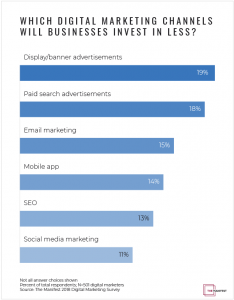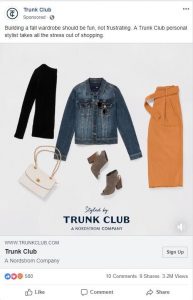
Every sales and marketing professional should be able to write an engaging follow-up email. 80% of deals need at least five touches before closing, so keeping the conversation alive is an indispensable skill.
But too many follow-up emails are just lame. Trite phrases like ‘just checking in’ dominate. Is this really the kind of uninspired impression you want to give prospects?
If you want a response, you must learn to write sales emails that actually matter to your reader.
Don’t treat follow-up emails as an afterthought or another task to check off your to-do list. Stand out from the crowd by using every contact as an opportunity to persuade.
Here are six tips to take your follow-ups from “meh” to unforgettable:
1. Reference your prior communication clearly and casually.
Your previous emails to a prospect may still be fresh in your mind, but you shouldn’t assume that they’re equally focused on the exchange, or that they’ve even seen your prior emails at all. Open your follow-up email with contextual information that reminds the recipient who you are and what you’ve previously discussed. Casually mention specific details about prior progress, to avoid redundancies and keep the conversation moving forward. For example: At the end of our call last week, we tentatively agreed to a 15% discount per unit on a much larger order.
2. Provide new and valuable information.
Many follow-up emails don’t work because they are little more than thinly-disguised narcissistic sales pitches. Just like ‘normal’ marketing or sales emails, every follow-up needs an angle, a hook that makes it interesting to read.
If you want your reader to engage with the conversation you’re trying to have, it’s on you to provide new interest and information every time you reach back out.
Share a bit of useful content. Tell an entertaining story, or ask an intelligent question. Say you just came across new information that changes the situation, and reveal just enough to tease them, and prompt a response. There are hundreds of ways to add interest to a simple follow-up email, and zero excuses for sending one that has no juice.
3. Keep it short.
Avoid the temptation to ramble in your follow-up email. Be friendly, but get to the point quickly. These days everyone is suffering from email overload. If you can learn how to communicate effectively in relatively few words, your emails will be better for it.
As a general rule, keep your follow-up emails to 3-5 short sentences or less. If the prospect responds, you can then write a more extensive reply.
4. Include a Call to Action.
Whenever you write an email, you should have a particular goal in mind. Maybe you want to schedule a phone call with the prospect, or you want them to watch the video you’ve linked to. But whatever the desired action is, you need to explicitly ask the recipient to perform it. This is your Call to Action (CTA).
Without direct instructions, it’s unlikely that your target will take action before moving on to the next email in the inbox.
5. Follow-up more than once.
Many people give up when they don’t get a response. But this is a big mistake. Even if your first email doesn’t get a response, the second email has a 21% chance of being read. Persistence pays off!
So don’t lose heart after a single unopened email. Try implementing a multiple email sequence for the best results.
6. Close the loop by sending a final goodbye.
If you have an unresponsive prospect, don’t just keep sending follow-up emails. Eventually, you’ll want to send a “goodbye” email, also known as a breakup email. In this email, you will need to make it clear in both the subject line and body that this will be your last attempt to contact them.
Why send a goodbye email? Well, they have great response rates, and it’s basic psychology. When people think that this is their last chance to get something, they will become more interested. Take advantage of this by making the goodbye email part of your SOP.
By following these best practices, you can write better follow-up emails that engage your contacts and win business.
Digital & Social Articles on Business 2 Community(57)







